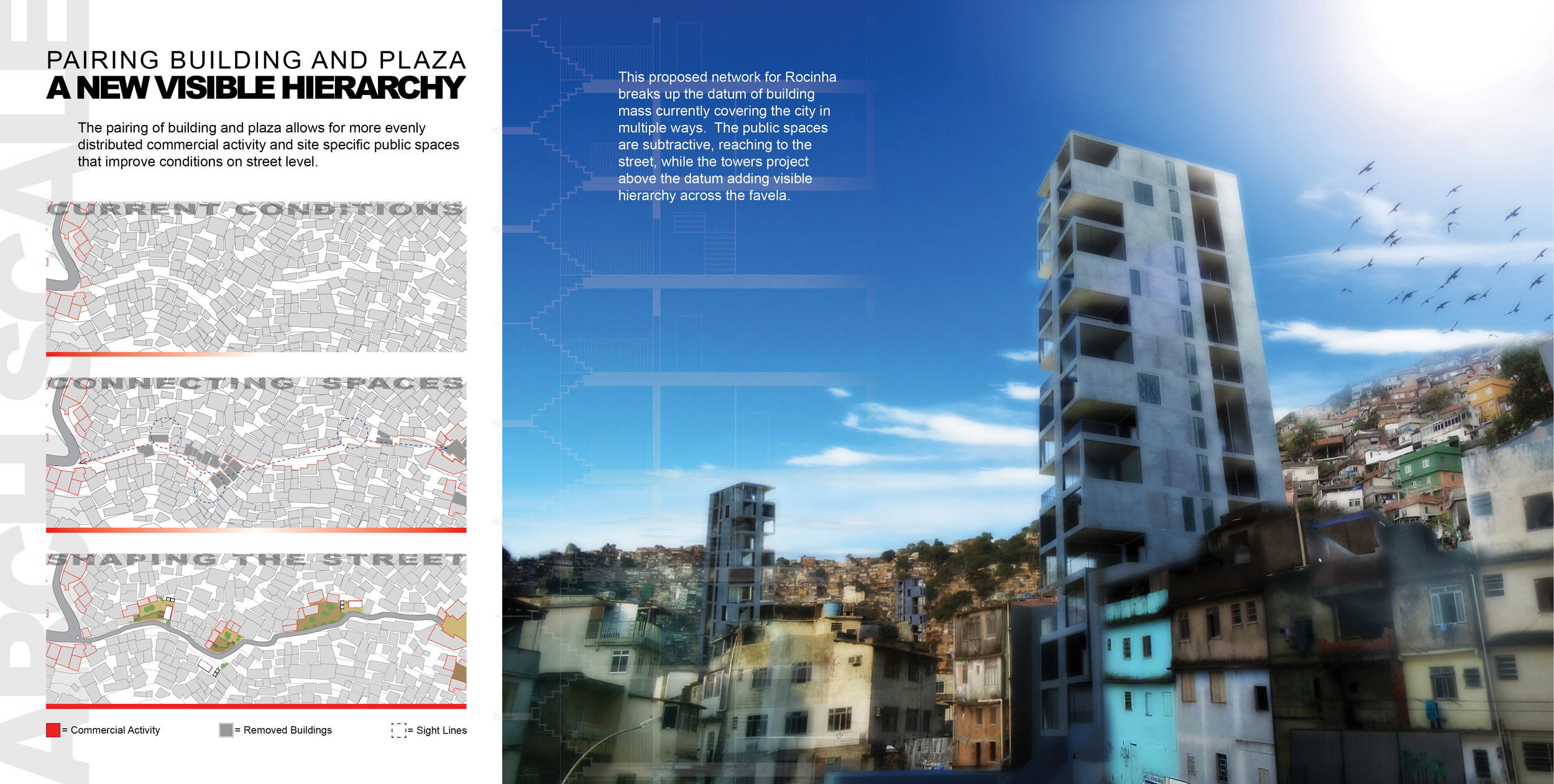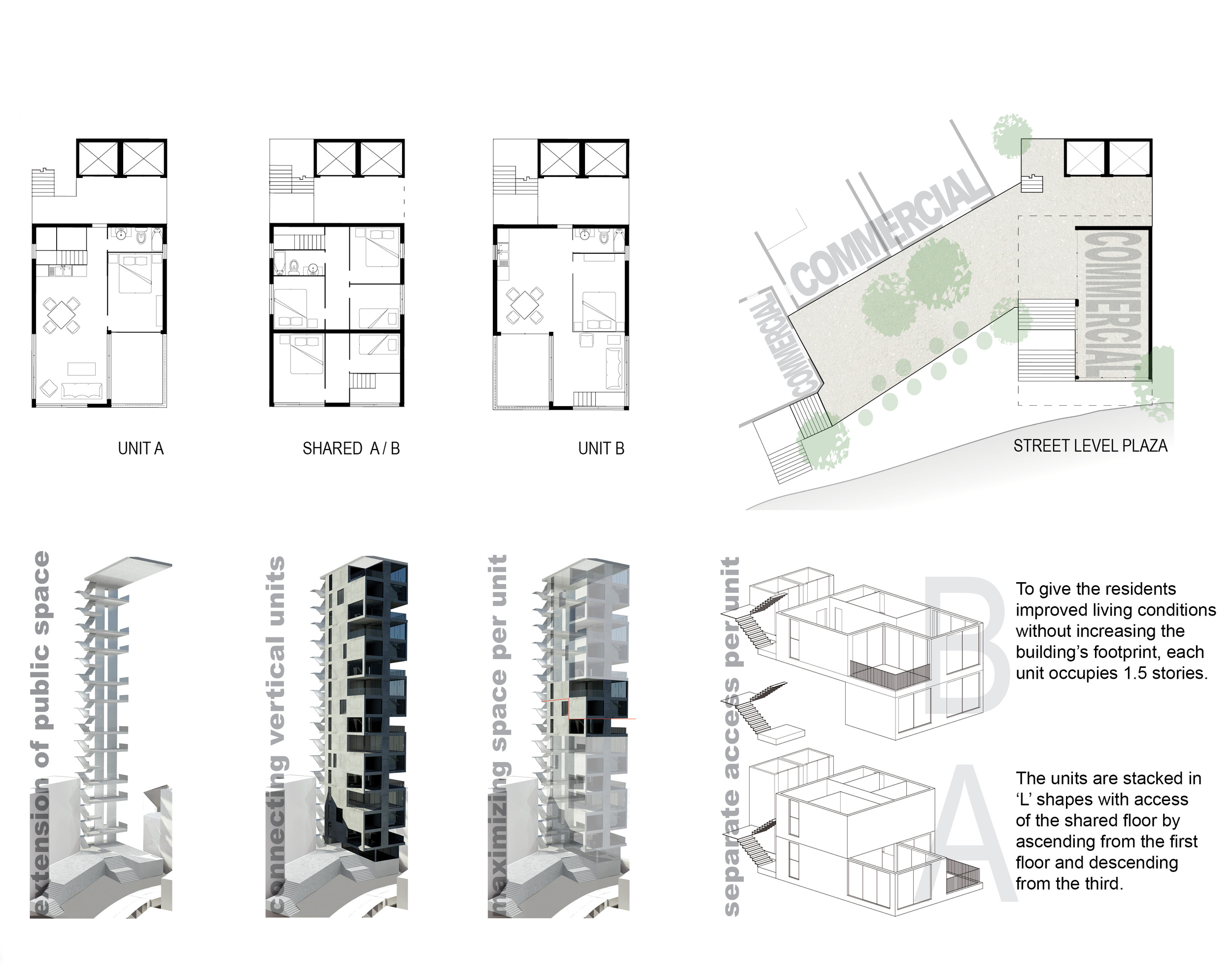This slum, or favela, outside of Rio is home to an estimated 150,000 people but on a plot size just slightly larger than Time Square in NYC. Such density invites numerous dangers, from health and sanitation to transportation and public safety. This design solution focuses on relieving density by introducing public space, while remaining sensitive to the micro-communities residents economic and social lives depend on. It attacks this issue at both the city scale and at the architectural scale.
The favela is first divided into zones and a central location for each is defined. This will become the primary plaza and destination space for each zone. Secondly, by locating existing paths of circulation and carving away new paths where necessary, commercial corridors link each zone's plaza; creating a new spatial hierarchy. By locating existing spaces along these paths and expanding them, smaller plazas periodically introduce relief to these corridors whenever a walking distance exceeds a 1/4 mile radius.
Emerging from each smaller plaza stands a tower to house the displaced citizens, allowing tower residents to socialize and conduct business out of the plaza directly below them. In order to simultaneously provide more suitable living conditions and keep a minimal building footprint, each unit is 1.5 floors.





